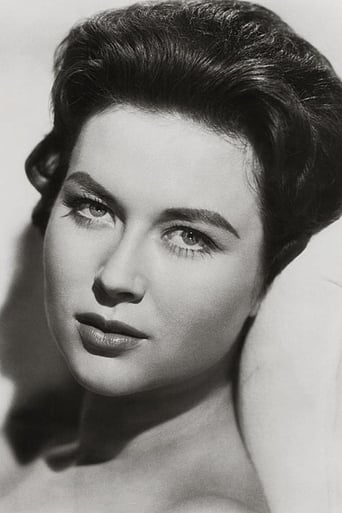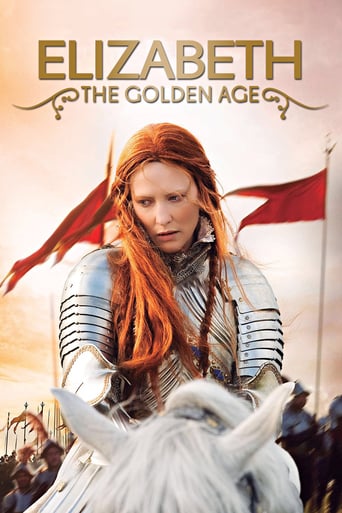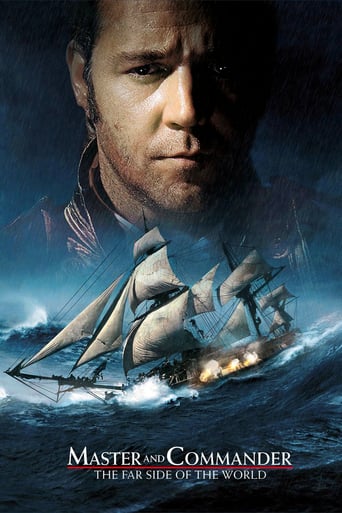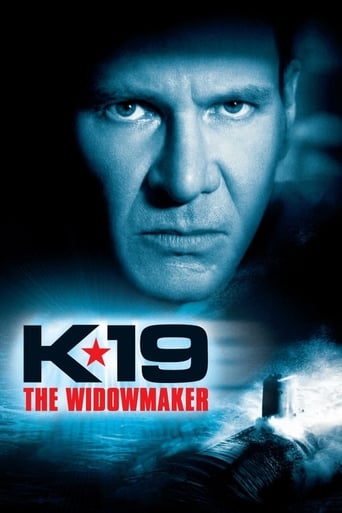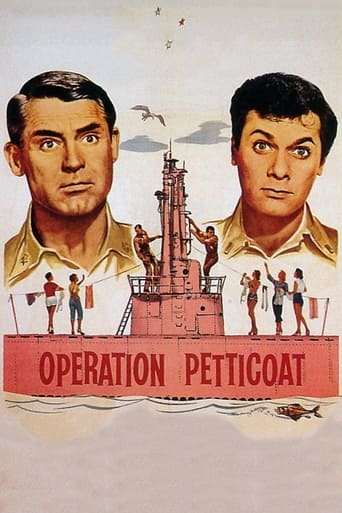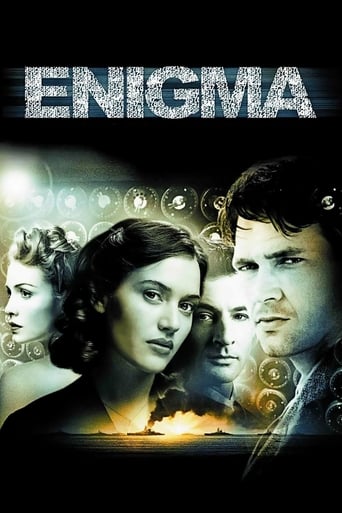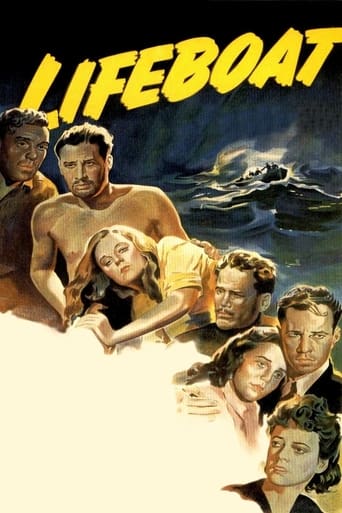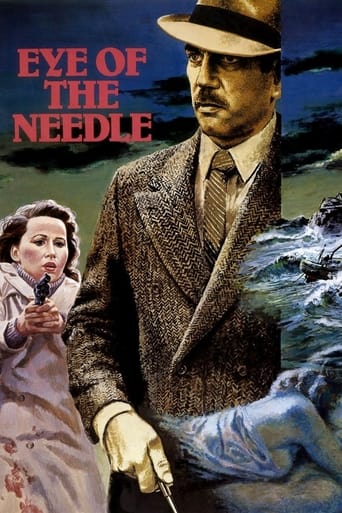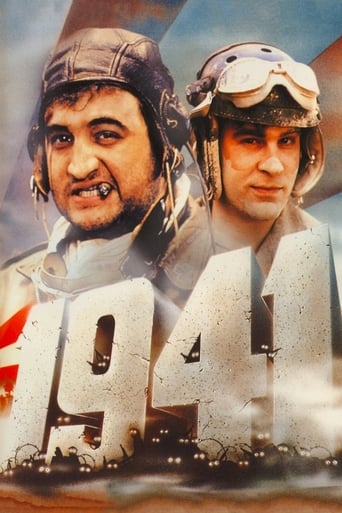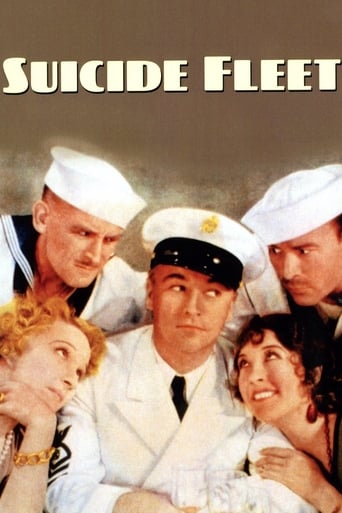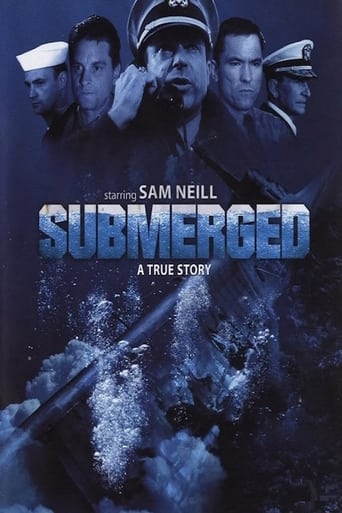
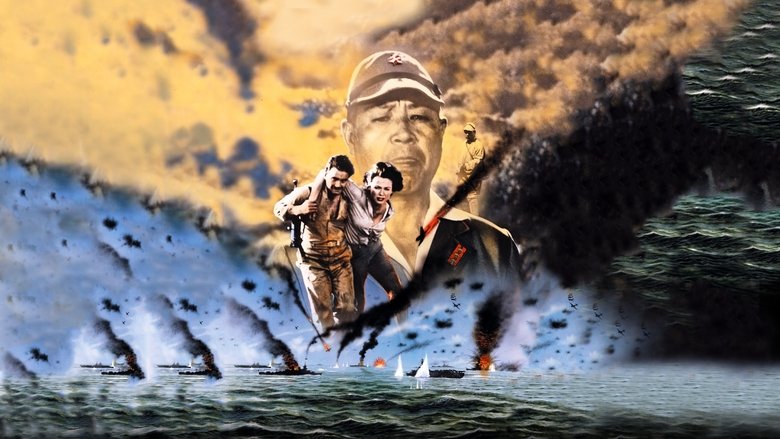
Battle of the Coral Sea (1959)
A US submarine and its crew are captured by the Japanese on the eve of a major WWII battle.
Watch Trailer
Cast
Similar titles
Reviews
I like the storyline of this show,it attract me so much
That was an excellent one.
It's funny, it's tense, it features two great performances from two actors and the director expertly creates a web of odd tension where you actually don't know what is happening for the majority of the run time.
The movie's not perfect, but it sticks the landing of its message. It was engaging - thrilling at times - and I personally thought it was a great time.
Cliff Robertson skippers a submarine in the South Pacific in 1942 during and after the Battle of the Coral Sea, a slug fest that lost the US more ships than the Japanese but prevented their landing on New Guinea, just across the Torrest Straits from Australia. Subs played no important part in the battle and the American forces had little idea of what they were doing because this was their first real engagement since Pearl Harbor.It begins with an action scene, Robertson's boat being attacked by enemy aircraft while rescuing some downed flyers. That scene is okay. Then, below decks, the movie begins to macerate. There is always banter among enlisted men in these war movies. It may be about the meaning of FUBAR, as in "Saving Private Ryan", or about the delicate strucure of an ordinary leaf, as in "A Walk in the Sun." Sometimes it's amusing. Here it begins with a silly argument between Bates and the man he thinks stole his chewing gum. The reason for the theft is never explained, nor is the hole in the pants of the thief. It's markedly pointless. When the Exec peers through the scope and sees a Japanese carrier, he exclaims, "Sweet sufferin' sukiyaki." Robertson: "You can say that again." "Sweet sufferin' sukiyaki." Not a lot of effort has gone into the script, but that's not a reflection on Robertson, who delivers his usual solid performance, though some might say stolid.Sent on a top secret mission about a third of the way through, the script becomes untethered and changes to a Japanese POW camp, one of those camps with a civilized commander who has spent time in America and admires the country but who feels an overwhelming duty to discharge his military obligations. Well, it worked in "The Bridge On the River Kwai." The strenuous work in the prison camp is lightened somewhat by the presence of a pretty blond nurse, who has no facilities to cope with the pneumonia contracted by the executive officer. Also, living the with Japanese occupiers of the island is the attractive Gia Scala who has declared herself "neutral." But Robertson is disincline to toy with her. His intention is to escape from the island (the size of Manhattan and surrounded by five hundred miles of ocean) and he asks Scala for weapons. "I couldn't possibly do that. Perhaps some knife blades." With barely a glance at her, Robertson snaps, "Get 'em." He needs her to get the knife blades so they can try to escape. She does and they do, but escape is no easy matter. There are casualties. ("Sorry, Peg. I'm afraid I can't make it. You'll have to go on without me.")The title of the film sounds like an epic along the lines of "Saving Private Ryan" or "The Longest Day." It's not. The battle of the Coral Sea lasts about five minutes at the very end and is largely cobbled together from familiar newsreel footage or miniatures from earlier movies like "Air Force", "Destination Tokyo," and "Gung Ho." If you intend to watch it, don't do it for a lesson in history.
BATTLE OF THE CORAL SEA is a complete misnomer of a title for this B-movie WW2 flick about the crew of a US submarine finding themselves at the mercy of the Japanese navy. It's not a battle film at all, it's too cheap for that, and the titular event merely takes place in the last five minutes of the production thanks to some aged stock footage. No, what we have here is a typical prisoner of war film, with the submarine crew forced to surrender to the Japanese, faring on a remote island, and eventually rising up against their oppressors.The cast is headed by genre favourite Cliff Robertson with the likes of L.Q. Jones in support, and there's a tiny role for a debuting George Takei if you can manage to spot him. Generally the production is hampered by a small budget which means that this is a very talky production without much in the way of action or excitement, although the eventual uprising scenes are quite well handled. Sadly they come too little too late for this to be an enjoyable production.
Maybe there should be a genre called "situation drama". The 50s was the era of the double feature. Often there was a main feature with what was called a supporting feature. Often independently produced, they were films made to a price and sold outright to a studio. There were a load of "westerns" which were made restricted to a tiny and mainly ethical plot as opposed to the non-stop action of the so-called juvenile westerns. They were largely shot in the studio and on a tired town set on the back lot. Outdoor dialog scenes were shot on clever but artificial sets. Action could be shot MOS. Even if made in cinemascope they were shot B&W. A "name", usually a faded second line star from the late Golden Age would be employed and then a few actors and pretty women to set him off, then some anonymous background people. These would populate a space but were limited in numbers. The secret of these films is the scheduling. Crowd all the crowd scenes would be shot in one or two days. Supporting actors would have their scenes shot in two or three days. Most of the scenes are contrived to be dialog, two shot, three shot, and four shot set-ups. Most of the time the town seems to be inhabited solely by the principal players. The leading actor would get a handsome but not astronomical salary. I remember working for a producer in 1980 and discovering the prices for some of the actors- it was possible to hire the likes of Chuck Heston or Bob Mitchum for $400,000 and virtually any actress in the world except for a dozen stars for $4,000 a week. That was in 1980 (in any case this was way out of the ballpark for my producer). Never the less, most of the pictures weren't all that terrible, at least at first. Late, when the formula became known, everyone and anyone could turn out films like sausages I believe is the cliché. Some of the later ones are merely perfunctory. At their best they were training grounds for new talents and a place to revisit the heroes of the recent past. Its also a world where one becomes aware that the casting for name recognition meant that a producer who didn't see the innate dignity and urbanity of, say, Dana Andrews, would think it would be a good idea that, well, he's a good looking guy, we'll put him in a western.What does this have to do with a film called THE BATTLE OF THE CORAL SEA? First of all, the title is misleading, as Peter Griffin said when he was being escorted from the poop deck. Forget the prequel to Midway tag. It's a war picture but the sub-genre isn't navel warfare, but rather a POW picture. The only things representing the battle are the bookends, stock footage (some anachronistic) of navel warfare kind of stuff. The set-up: Cliff Robertson is a sub commander sent out on a recon mission before the aforementioned battle with the strong suggestion that if he has to sacrifice his boat, his men, and himself he must not reveal the dingus, the rendezvous point. Emphasis. So of course that's just what happens. Japanese Navy frogmen in post war scuba (!) gear attach mines to the sub and Robertson gives up after scuttling the boat. That's the first half hour.So Robertson and some character actors are separated from the crew who were never so numerous anyway. They are taken to Club Med, I mean the Japanese POW camp. This film was made at the beginning of the "rehabilitate Japan period". The men are forcibly put to work walking on a wheel to dredge up the drinking water for the camp. This is no Bataan Death March. But for no more than one hour at a time. There are people in my neighborhood who pay several hundred dollars a month to do that. There is a knockout blond Australian nurse who lives with them and a dark woman, daughter of a planter, who may be either French or Italian but claims to be "neutral". The POWs have more room for fewer people than even Hogan. The Japanese commandant makes several strong requests to Robertson to reveal what he knows but he refuses. All they have to do is survive 3 days (that's when they're supposed to rendezvous. The dingus again. Time, like the studio sets, is compressed and confined. The commandant fails and either he's going to be replaced or Robertson is going to be taken away to be interrogated to death or both. So they escape and some of them get killed and the rest get back home safely and the Battle is fought and we win. The end. (BTW- the secret ID code is Fancy Free, which was the name of the wartime ballet about three sailors on leave in New York that was developed into ON THE TOWN)It was an important battle, but not the greatest sea battle in history. I think maybe Jutland or Port Arthur were both larger. It was the first sea battle fought between aircraft carriers and where the opponents never saw each other. It was usually accounted a tie but important as a step in turning the war back to Japan but really just a curtain raiser to the epochal Battle of Midway.THE BATTLE OF THE CORAL SEA is merely another time passer, somewhere between a real movie and TV. The only scene that I remember from seeing this film as a kid was the one where the American Sgt., played by a frequent face on TV, wins a wrestling match but is shot in the back by his defeated opponent. But during those long double features it was good to have a picture where one could leave to go to the bathroom or buy popcorn without missing much that was going on.
This movie is the prequel to the 1976 movie Midway. On May 8, 1942, the Allies won the first major battle of the Pacific War. The Battle of the Coral Sea was technically a draw but it saw a number of firsts_____for example_____it was the first battle fought inwhich both sides never saw each other. It was a carrier battle. The first carrier battle actually. Japan lost the carrier Junyo and a destroyer. The United States, surprisingly enough, lost only one carrier, the converted battle cruiser Lexington, and one severely damaged. The Yorktown, which will go down a month later at Midway.

